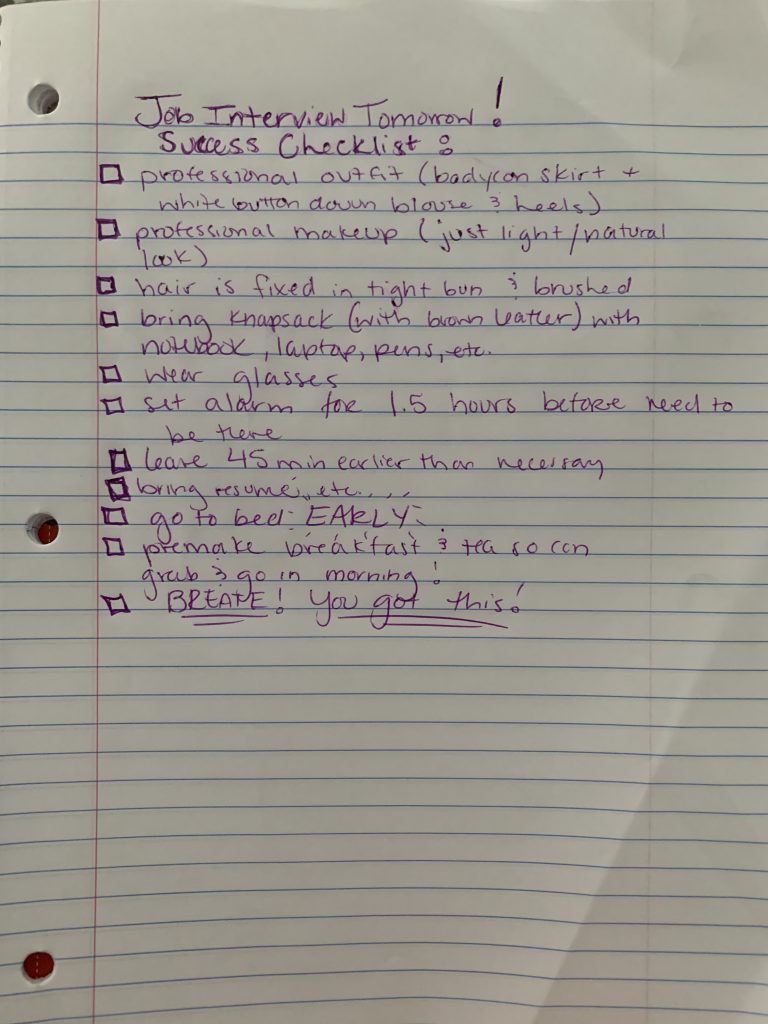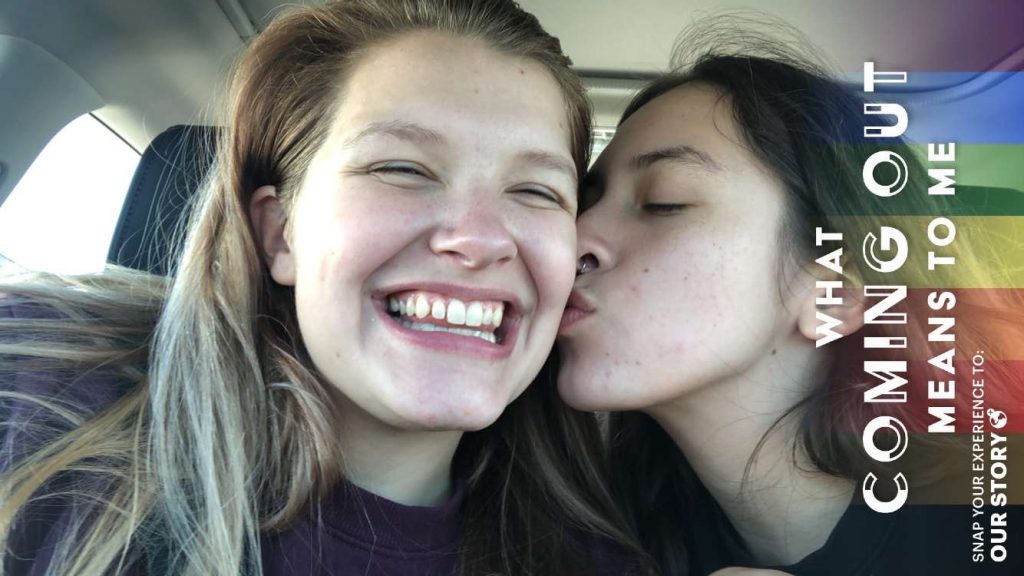Artifact Five: Module 5
This artifact visibly informed me of the social self and firsthand how we change ourselves to fit into other’s perspectives: especially through the concepts of impression management. This first occurred to me in middle school to attempt to fit in, but I never knew the terminology or the actual study behind it. This artifact furthered the knowledge I developed from the course readings about the self in social situations through the application to myself. This is especially true with the analysis of what I would look like going into a job interview seen below.
Representative Visual Image:

I chose to include this image, as it shows the steps I would ensure to use regarding self-enhancement and impression management to obtain a job at a job interview.
Artifact Four: Module 14
This artifact challenged my typical view of happiness, especially by making me look at the cultural influence and impact upon the happiness of myself and others. For example, the American culture was originally based around happiness and freedom; however, now we are stuck in a cyclic void of angst and capitalism. When looking at other cultures, especially those devoid of capitalism, the “true” or original values of happiness withstand- like family, friendships, and overall wellbeing of the individual. In fact, most happiness in every culture is based around the wellbeing of the individual in reference to the culture’s standard of living. Happiness is difficult to measure physically, especially regarding the analysis of one’s own happiness because of the American culture- a don’t ask, don’t tell culture when it comes to the reality of mental health.
Representative Visual Image:

This image represents my happiness. My girlfriend has been the absolute light of my life for almost ten months. I feel as if my face radiates pure joy in this image as I laugh while I kiss her.
Artifact Three: Module 12
This artifact increased my knowledge revolving around the concept of aggression. In all honesty, I didn’t know there were different types of aggression. In fact, I thought the only types of aggression were microaggressions and aggressive behavior. This artifact has taught me the different types of aggressions: harm to living things, harm to nonliving things, accidental, intentional, physical damage, nonphysical damage, self-defense, duty, instinct, survival, involving humans, involving animals, covert, inaction, for fun, and self-injury. The different levels of aggression placed me in awe, however, I think it is just because I’m not really an aggressive person but to myself. Deciding which is worse was one of the hardest aspects of the assignment. However, I think the top three worst types of aggression would be: killing for sport (fun aggression), intentional, and involving animals. In those cases, all the things this aggression is towards is not at fault and they are innocent. This artifact really changed my views on aggression.
Representative Visual Image:

https://i.imgflip.com/31xf4r.jpg
This image refers to me as an individual and how I deal with my aggressive tendencies. I also think it shows how I would prefer harm to nonliving things versus aggression being taken out on living things. This image is how I compared the assignment to myself.
Artifact Two: Module 11
This artifact caused a different type of thinking about happiness again, as did the artifact in module fourteen. However, this artifact brought forth the comparison between happiness and selfishness. The overall findings in my small experiment showed that most of the people I believed were happy were also not selfish. I think this shows who I am as a person and who I choose to associate with as well. It is also comparable to Assignment five based around the good deeds we had to do and why we did them. Those more prone to selflessness lead happier lives because they surround themselves with joyous people.
Representative Visual Image:

This image is a reflection of my results matrix as mentioned in the paragraph above. This is the data that supports my statement that people who are seen as happy are also seen as selfless, or not selfish.
Artifact One: Module 4
This was absolutely my favorite artifact of all time. The in-depth analysis and video analysis regarding the media’s effect on availability heuristics and representative heuristics opened my eyes towards the effect of media well surpassing my other courses I have taken in the past. The media’s effect increases both prejudice and discrimination, where they have the power to decrease prejudice and racism. The impact of the media is highly intentional and is growing to be exposed, especially is social psychology.
Representative Visual Image:

This video brought the concept of media controlling availability and representative heuristics to life through the outright fear of the media perpetuated increase of crime and violence. In the screenshot above the video was explaining how people were moving to gated communities and “creating private enclaves, fortresses, like something out of the Middle Ages” to avoid the crime happening around them The media has made the availability heuristic to be fear and the need for protection to escape crime. However, as stated in the video, crime rates themselves had not increased, it was only the reports of crime. Yet, the media failed to mention this and continued to perpetuate fear. Walking along streets and leaving doors unlocked became terror filled acts due to the media and because of the only stimuli being available, individuals had no choice but to believe, especially in moments of quick decisions.